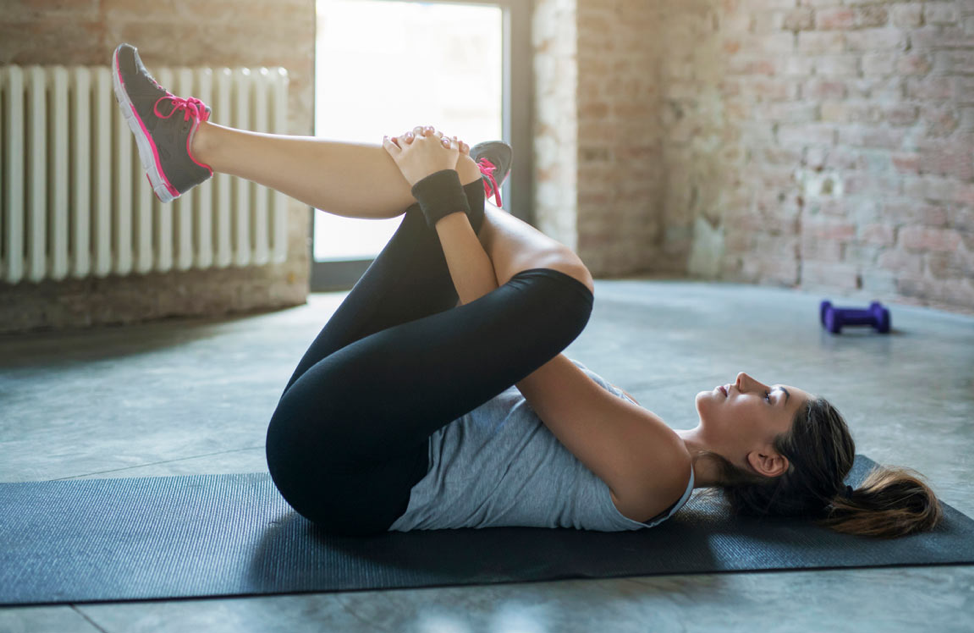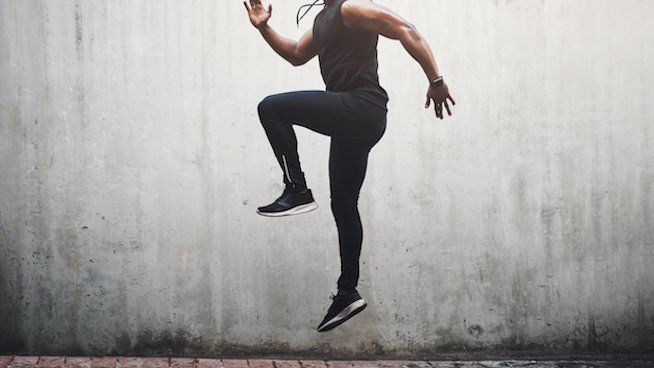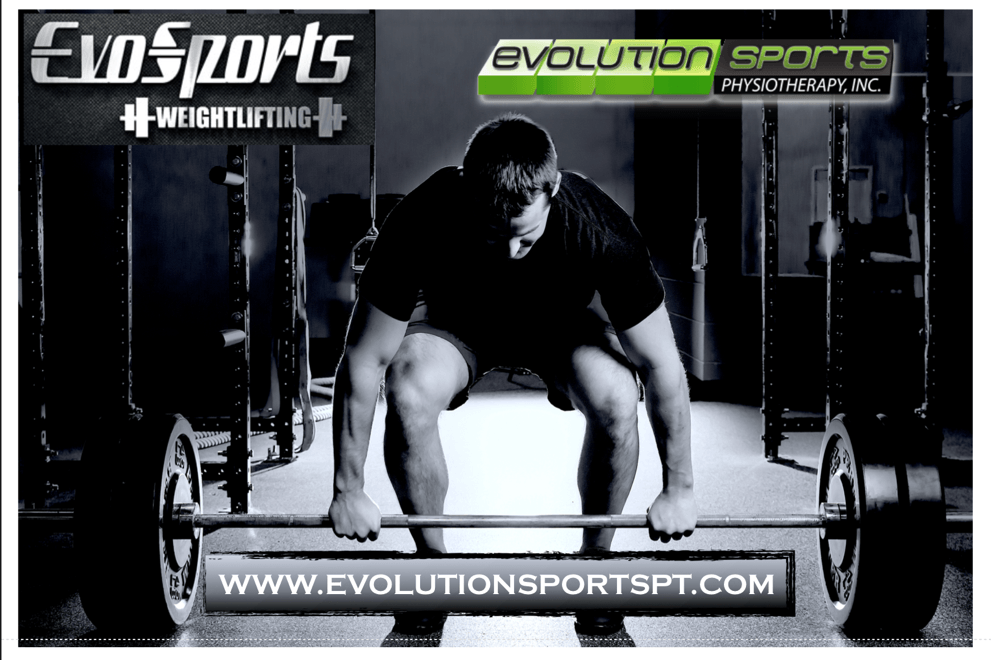Long Term Athletic Development
Morgan S. Johnson • October 23, 2019
Every parent wants the best for their child.
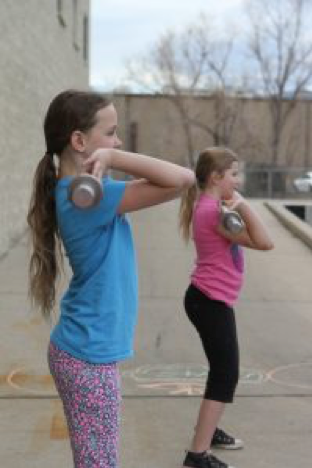
That could be happiness, confidence, social circles, academic aptitude, fitness, and even athleticism. But somewhere along the way, we've overvalued the importance of skill development within specific sports, believing that it will make us better athletes at that sport when our kids are older. Some of us do so because we were great at a sport and want to see our child be just as good, some of us were never that good at all and live vicariously through our kids, seeing their aptitude as superior to our own at that age, and some of us want for our kids what we didn't have ourselves in terms of resources and training. All of those are great intentions but we can't look past the holistic health of our children and the value of generalized athleticism compared to specializes sport skill sets. When we do, we end up with weak, fragile kids, with good skills, but poor overall constitution,...and limited opportunities, ....and higher risk for injuries, and ultimately, a lower ceiling for athletic participation throughout life. We have to ask ourselves: What is best for my child overall? Is my child happy and balanced? Do we put too much emphasis on one thing too early in life? Is my child prepared to do other physical activities or change sports if they are unhappy with the one they've chosen (or the ones we've chosen for them)? Will my child grow up to be a healthy, fit, individual who is injury-proof and capable of doing many activities throughout their lifetime? I'll delve into each of these issues throughout this article.
Recently, The National Strength and Conditioning Association (NSCA) wrote a Position Statement on Long-Term Athletic Development1 which points out that " Because of their unique physical, psychological, and social differences, children and adolescents should engage in appropriately prescribed exercises programs that promote physical development to prevent injury and enhance fitness behaviors that can be retained later in life. Irrespective of whether a cild is involved in organized sport or engages in recreational physical activity, there remains a need to adopt a structured, logical, and evidence-based approach to the long-term development of athleticism." Our 32nd President, Franklin D. Roosevelt once said "We cannot always build the future for our youth, but we can build our your for the future."
The reason for writing this article is to point out that we've got it all wrong... And encourage a change in mindset and initiate discussion amongst parents, our kids, coaches, gym teachers, Health Professionals, Trainers, and Directors of Club Teams about our perspectives on what is best for our Kids. Ultimately, it is the parent who must decide. Ultimately, the parent must resist what others want for our children and make that intelligent decision with our child's input. We want so bad for our kids to be awesome at sports that the whole system has gotten away from us. We've put the carriage before the horse. We look at skills as the pre-requisite for awesomeness and have overlooked the role of developing foundational athleticism and its implications on a healthy adult society, one that excels at sports. Because of this we see more and more sports injuries occurring in the pediatric and adolescent populations. Little leaguer's Elbow, Patellofemoral Syndrome, Ilial Apophysitis, Sever's Disease, repetitive muscle strains, over-training syndromes, Shin splits, stress fractures/ periostitis, and yes, ACL ruptures with or without meniscal or other ligamentous complications.
I have personally approached a multitude of local Club Soccer and Lacrosse teams in the Baltimore area and presented both the research and the program we've devised for ACL Prevention programs and I've been turned away with statements such as " We already ask too much from our parents... it is so expensive that we can't ask them to pay more for a prevention program" or "we need to spend more time on skills practice..we've left it up to the kids to do their conditioning outside of club practice". The club teams would love for you to pay to play a sport year round, and go to tournament, after tournament, combine after combine, and play during the off-season, effectively leaving no "off-season". The following season, a particular women's club lacrosse team who turned down the idea of an injury prevention program, had 6 non-contact ACL injuries amongst its players playing for a local girl's private high school team. Unfortunately, this mindset does not have the children's well being in mind. They are worried about their season, the parents' bank account, the skills practice. Parents need to have the option and the gumption to think for themselves and not just follow the herd.
In many countries in Europe, children grow up with soccer, swimming, and gymnastics until they are heading into highschool. Additionally, many of them also incorporate Olympic Lifting into their regimen. What results is a base of healthy adolescents, who have good movement mechanics and joint mobility, flexibility, muscular endurance, speed, excellent kinesthesia (understanding where their body is in space), and resistance to exercise. Going into high-school, they increase their calisthenic training, progress Olympic Lifting, and then begin to specialize. What is there first and foremost is overall athleticism and foundational strength. They worry about the skills later. We do the opposite. We starting pushing the skills at an early age, overlooking the mechanics and overall athleticism. Even the trainers we send our kids to have a non-specific "binder workout" or "group workout" that lacks a thorough health history, physical screen, and objective testing and further lacks individualized exercise prescription based on an individual athlete's needs analysis. We want better athlete's now...we don't want to wait for them. Even the colleges are starting to recruit female lacrosse players out of middle school and ninth grade because they too need to get their hands on the best athletes immediately. This is part of the problem, not part of the solution. These girls have barely gotten through puberty and their bodies have a lot to catch up to. Their development of athleticism needs to start here, not end here. With this attitude, we have kids that are great for their age at 14 and often injured before they get out of high school.
I hope that I've got some people thinking and talking, because that is what the Health Professionals at Evolution Sports are doing. We are trying to demonstrate that there is a better way to do things. A proper long-term athlete development program can create a better athlete, with good, well rounded physical abilities, that will ultimately produce a better lacrosse attack, a better soccer player, a better baseball pitcher, a better football quarterback, or gymnast. And we can do all of this whilst reducing the number of injuries that we are seeing in our children. Injuries that have already been shown to lead to early OA in the knee and need for joint replacements, as is the case with female ACL reconstructions. Do we want that for our kids? Is it worth it to them to play lacrosse for 8 years and get recruited at an early age, if they are getting a knee replacement when they're 45 of 50? That's what the research is showing.2,3 Let's change our mindset...and let's do it together.
In a future blog, we will go through these pillars of athletic development in a little more detail and discuss the construct of a proper Long-Term Athletic Development Program and how Evolution Sports will look to implement it in the local community. We'll start there and hopefully the rest of the country will catch on....
For more information on the Long-Term Athletic Development Program at Evolution Sports, please feel free to contact Chris Fusco.
1. Lloyd, R, Cronin, J, et al. National Strength and Conditioning Association Position Statement on Long-Term Athletic Development. Journal of Strength and Conditioning Research. 30(6)/149-1509
2. Suter, LG, et al. Projecting Lifetime Risk of Symptomatic Knee Osteoarthritis and Total Knee Replacement in Individuals Sustaining a Complete Anterior Cruciate Ligament Tear in Early Adulthood. Arthritis Care Res (Hoboken). 2016 May 23.
3. Simon, D, et al. Review Article: The Relationship between Anterior Cruciate Ligament Injury and Osteoarthritis of the Knee. Advances in Orthopedics, Volume 2015 (2015), Article ID 928301, 11 pages
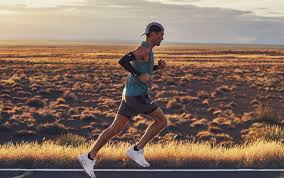
Running is one of the most common and popular methods of fitness in the world, with many cities and communities taking part in establishment of running events from 5k to marathon level and above, to smaller running cohorts, and for social events. However, while running has a high link to overall improved cardiovascular wellbeing, it is also one of the most injury prone athletic populations in world with injury incidence of up to 80%! Fortunately, there are many strategies to help combat and prevent running related injuries for any skill level. TRAIN APPROPRIATELY! As with any other sport, training for the specific demands of running can greatly reduce the risk of injury. The World Health Organization (WHO) recommends a minimum of 150 minutes of moderate-intensity aerobic physical activity or 75 minutes of vigorous-intensity physical activity throughout the week, based on strong evidence of health benefits and reductions upon mortality rates. While many factors influence risk of injury, there are a few significant ones for any running athlete: Type of exercise Find the aerobic exercise that you are passionate about! However, limiting yourself to the same route and same type of run could increase your risk for injury. Cross training with other modes of exercise including strength training or different types of runs could help reduce risk of chronic and acute injury! Exercise frequency and progression Novice runners may benefit from having more days of recovery, especially in the beginning. However, knowing when to progress overall speed, distance, or number of training days can be tricky! Remembering to increase only one variable at a time can help mitigate risk of injury. Exercise intensity and duration Having trouble with determining how intense your run is? Heart rate is an excellent measure of overall cardiovascular output. An easy calculation for determining your Heart Rate maximum is: 220-age As stated prior, recommended minimums for health benefits are 150-300 minutes of moderate intensity, or 75-150 minutes of vigorous intensity per week that typically are broken up into 3-5 days during the week. However, do not let these recommendations deter you from running if you cannot reach them! Calculate using % of Maximum Heart rate, Moderate intensity for aerobic exercise 60-75% of your calculated Heart Rate max; vigorous intensity 75-90% of maximum Heart Rate Equipment Matters! In a recent systematic review of 15 studies there was moderate to strong evidence of higher injury prevalence with persons who had sustained a previous injury, as well as the use of orthotics and the same pair of running shoes for longer than 4-6 months. While there are many different brands and trends within the running shoe and orthotic industry, it is important to note that finding the right pair of shoes for you may take time! Additionally, according to a study on use of multiple shoes during training, results found that there was a 39% decrease in running related injuries over a 22-week period when athletes used at least one more pair of running shoes during the week. Rehab potential 80% of all running injuries are result of overuse or chronic pathology, which may be a result from overtraining or limited tissue adaptations from the amount of load produced on the body during activity. Different types or locations of injury require methods of individualized rehabilitation, and the therapy experts at Evolution Sports Physiotherapy are well versed in the appropriate rehabilitation and progression of any running related injuries. So, whether you are a seasoned runner looking for a full evaluation of running form, or a beginner working towards your first 5K, our approach towards integration of best available evidence within clinical practice and dedication to patient care provides our patients with optimal rehabilitation potential. If you or anyone you know has suffered a running related injury, please contact us via phone at 410-628-0520 or email at chris.mooney@evolutionsportspt.com. We look forward to answering any of your questions and assisting with all of your rehab needs! References 1. Kozlovskaia M, Vlahovich N, Rathbone E, Manzanero S, Keogh J, Hughes DC. A profile of health, lifestyle and training habits of 4720 Australian recreational runners-The case for promoting running for health benefits. Health Promot J Austr. 2019 Apr;30(2):172-179. 2. van der Worp MP, ten Haaf DS, van Cingel R, de Wijer A, Nijhuis-van der Sanden MW, Staal JB. Injuries in runners; a systematic review on risk factors and sex differences. PLoS One. 2015;10(2):e0114937. Published 2015 Feb 23 3. Francis P, Whatman C, Sheerin K, Hume P, Johnson MI. The Proportion of Lower Limb Running Injuries by Gender, Anatomical Location and Specific Pathology: A Systematic Review. J Sports Sci Med. 2019;18(1):21-31. Published 2019 Feb 11 4. Malisoux L, Ramesh J, Mann R, Seil R, Urhausen A, Theisen D. Can parallel use of different running shoes decrease running-related injury risk?. Scand J Med Sci Sports. 2015;25(1):110-115.
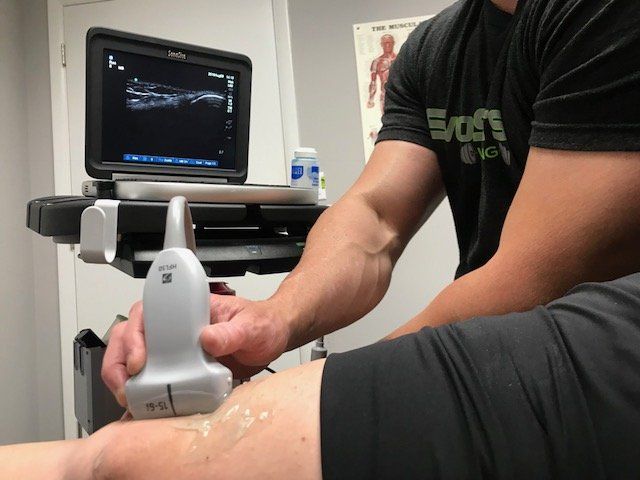
Musculoskeletal Diagnostic Ultrasound (DU) is a powerful tool that can be utilized by Physical Therapists to identify tendonopathies. Furthermore, DU can be utilized with Dry Needling in order to visualize the needle which has been shown to significanlty improve the accuracy of the user to target the affected area compared to relying solely on palpation and anatomical landmarks.
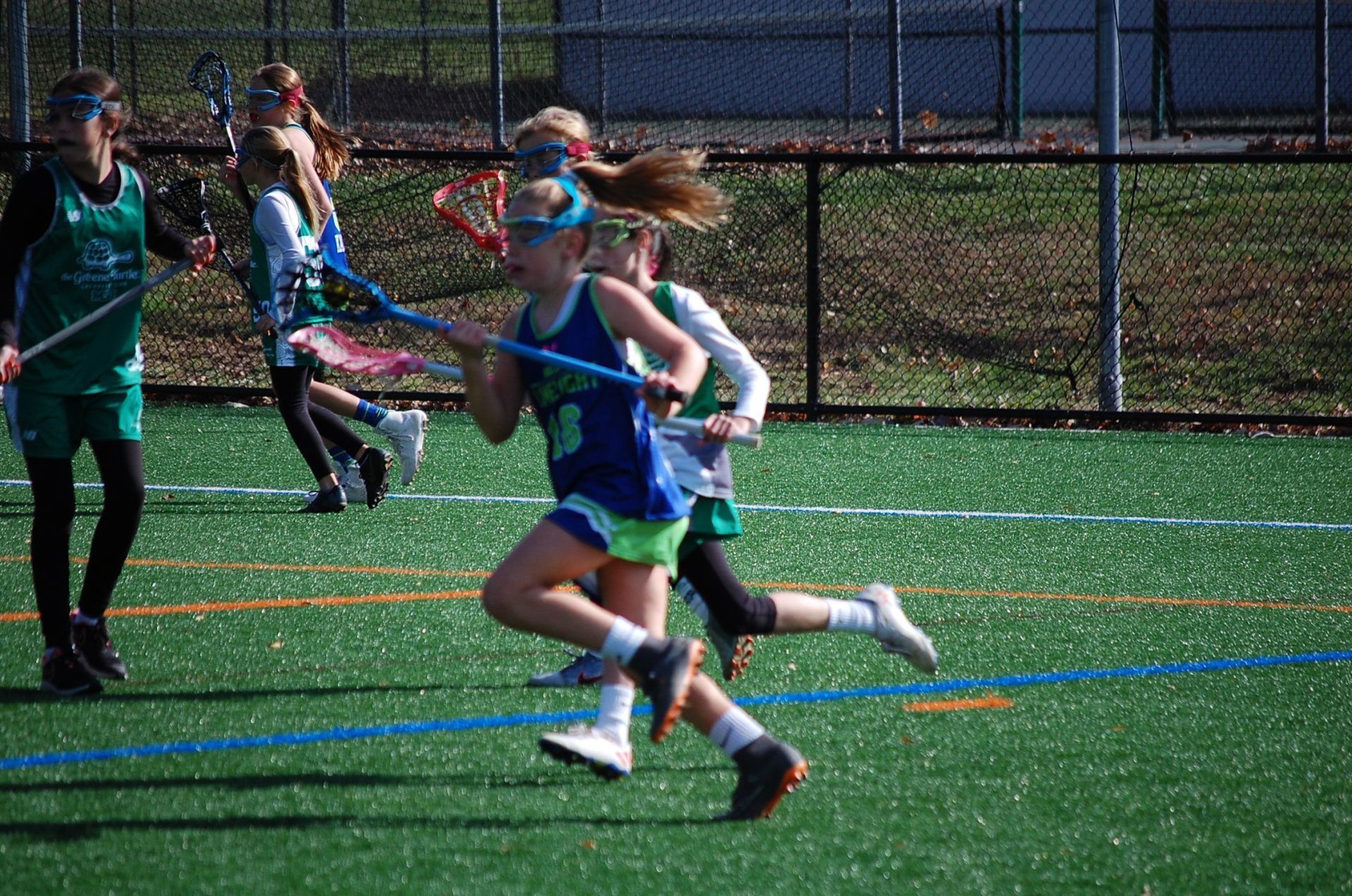
The first installment in our running mechanics series discussed the importance of stability and striking your support leg under your hips. This Pose position will allow the runner to absorb forces more readily and prepare more efficiently for the next movement. The next movement in the Pose Method is the Fall. The purpose of this phase is to increase speed and since the Pose Method is all about “effortless running,” optimal body alignment will allow gravity to do the brunt force of the work.
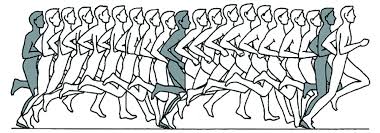
The Pose Method of running allows one to identify and promote a running form that maximizes gravity along with the body’s effort and stored energy (elasticity) to create efficient movement. In essence, it makes running easier and less physically stressful to the body. There is a lot of debate surrounding running form. Some even question if it’s necessary to promote a particular way of running. However, it is a universally accepted foundation that every activity has a “best practice” - from changing a tire to playing basketball to cooking. As able-bodied individuals, we are all physically capable of performing such activities, but how long it will take to complete? How many unnecessary steps do we take? How much additional effort and load do we put on our bodies mentally and physically? These questions can be addressed by learning and PRACTICING ideal mechanics. Sure, you can go out on a 1-mile run in a recommended shoe to begin your fitness journey but would you start your golf journey on the tee box of Hole 1 with your newly purchased clubs? No, likely you would work with a knowledgeable person on how to hold the club, general swing mechanics and practice several range balls before venturing to the course. Why should running be any different? Particularly in a sport where “novice” runners have a much higher risk of running related injuries (RRI) compared to experienced runners. In a study completed in 2018, authors found a 2x-injury rate in novice runners compared to experienced runners over a 4-yr period. Secondly, running is the cornerstone of several other sports so as you go out to shoot 100 free throws every day to practice your form, why wouldn’t you add drills to improve the form of getting from Point A to Point B on the court? It makes sense to make use of the studies on running form and body mechanics to begin a new fitness goal in order to give us an advantage - how many YouTube videos do you watch before endeavoring to fix the washing machine? Knowledge is power. The Pose Method works by identifying repetitive “poses” during a running cycle through which every runner must pass: they have been described as Pose (the typical running “picture”), Pull and Fall. For the next few weeks, we will be breaking down each phase. We will start with “the Pose.”
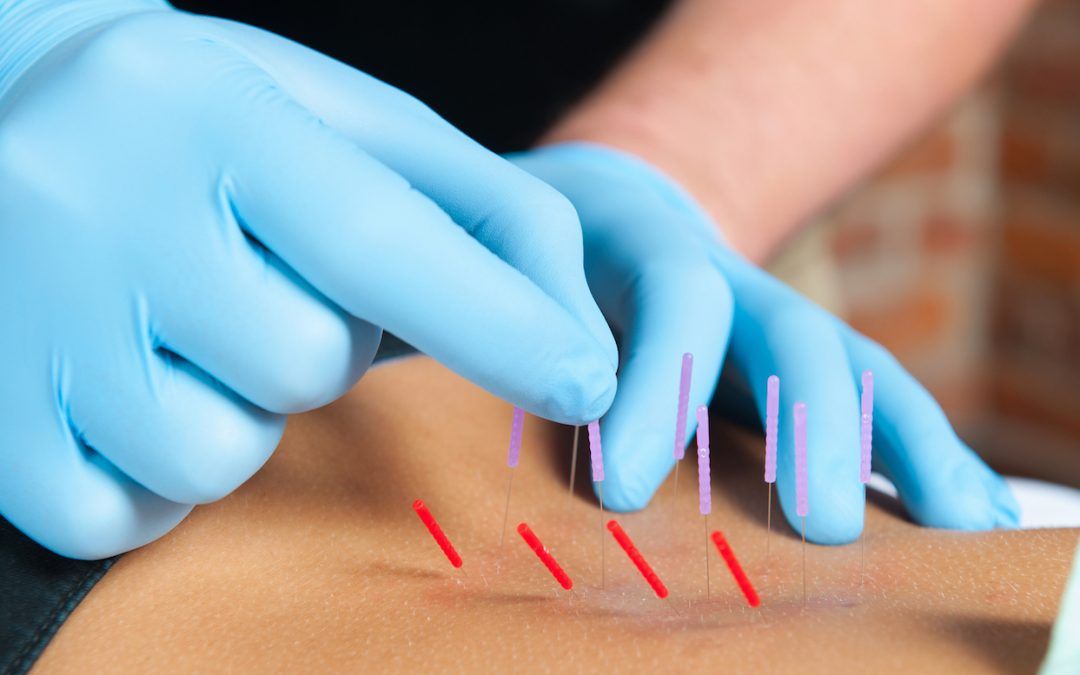
In our previous blog post, we highlighted the peripheral mechanisms of dry needling into muscle tissue. The benefits of trigger point dry needling have been well documented in the literature. However, this is only one component of needling in the treatment of neuro-muscular dysfunction. A comprehensive definition of dry needling should include nerves, ligaments, tendons, scar tissue, bone and teno-osseus junctions.1 This requires expanding beyond the trigger point model to consider additional peripheral, spinal and supraspinal mechanisms. The classic local twitch response is thought to be a strong neural impulse triggered from needling into multiple sensitize loci. Mirror local twitch responses have been recorded in the opposite trapezius muscle during dry needling of the symptomatic trapezius. This example suggests a consideration of central mechanisms in addition to local muscle dysfunction.1 A brief review of pain physiology is helpful in consideration of central dry needling mechanisms. Pain sensation originates in peripheral nociceptors that continue into sensory fibers, which feed into the central nervous system through the dorsal horn of the spinal cord.2 After connecting with spinal neurons, the pathway continues up the spinothalamic and spinoreticulothalamic tracts. These lead to supraspinal locations including the thalamus, parabrachial nucleus and amygdala. There is significant potential for both dysfunction and pain relief within this neural system.2 Throughout this discussion, the terms acupuncture and dry needling will be used interchangeably.1 While many studies use the term “dry needling,” others commonly use terms including TrP acupuncture, acupuncture needling and electroacupuncture. Several studies have used acupuncture and dry needling in the same title. All of these cases meet the strict definition of “dry needling”. This trend of discussing dry needling as acupuncture is commonly seen in the UK, Canada, USA and Germany.1 Acupuncture randomized control trials and other studies have commonly used western medical diagnoses including neck pain, knee osteoarthritis and plantar fasciitis.1 Furthermore, these studies applied needles into “Ah-Shi points,” which is Chinese for “auwh that’s where it hurts” or “that’s it.” These are synonymous with trigger points and are used in combination with non-trigger point targets. In this sense, it is beneficial for physical therapists to recognize the findings of appropriate biomedical acupuncture research.1 Studies have demonstrated that electroacupuncture involves many different mechanisms and bioactive substances, both peripherally and centrally for pain conditions.3 Peripheral release of endogenous opioids originate from lymphocytes, monocytes/macrophages and granulocytes. Sympathetic nerve fibers are additionally activated for opioid response. These opioids activate receptors on peripheral nerve terminals to decrease pain signaling back to spinal and supraspinal structures.3 Electroacupuncture has been shown to inhibit the sensory component of pain through spinal mechanisms including opioids, serotonin, norephinephrine and glutamate.3 Spinal opioid receptors are targeted to inhibit thermal hyperalgesia and mechanical pain thresholds. Low and high frequency electroacupuncture have been found to inhibit thermal pain during acute pain. Thermal, mechanical and spontaneous pain are inhibited in persistent pain conditions. Electroacupuncture influence on opioid receptors is thought to occur on both presynaptic primary afferent fibers and postsynaptic dorsal horn neurons.3 Electroacupuncture studies have also confirmed the involvement of spinal serotonin and norephinephrine in pain inhibition.3 This includes serotonin-containing nucleus raphe magnus neurons and norepinephrine-containing locus coeruleus neurons. Electroacupuncture also decreases glutamate receptor activity and induces release of spinal norepinephrine, which each inhibit pain signals at the spinal level. Pain reduction has also been noted with changes in glial cells, cytokines, signal molecules/pathways, dopamine and acetylcholine at the spinal level.3 Electroacupuncture benefits via supraspinal mechanisms have been noted with the contribution of many nuclei.3 Sensory components are mediated via nucleus raphe magnus, periaqueductal gray, locus coeruleus, arcuate, preoptic area, nucleus submedius, habenular, accumbens, caudate, septal area and amygdala. Opioid activity in the arcuate-periaqueductal gray-nucleus raphe magnus-spinal dorsal horn pathway are thought to be particularly important in this sensory realm. Several studies have shown that endorphin release blocks affective pain responses while controlling for sensory pain inhibition. This selective supraspinal influence on affective and sensory components of pain is a similar consideration for drug efficacy in pain management, including the use of morphine.3 The physical therapists at Evolution Sports Physiotherapy have been trained in a variety of needling techniques to meet the individual needs of our patients. Our comprehensive treatment approach respects localized tissue dysfunction in addition to central considerations based on clinical findings and assessment. Please contact us with any questions concerning dry needling and treatment options. References: 1. Dunning J et al. Dry needling: a literature review with implications for clinical practice guidelines. Physical Therapy Reviews 19(4):252-265, 2014 2. Cagnie B et al. Physiologic effects of dry needling. Curr Pain Headache Rep. 17:348, 2013. 3. Zhang R et al. Mechanisms of acupuncture- electroacupuncture on persistent pain. Anesthesiology. 120:482-503, 2014.

This is probably the most common question asked by patients when dry needling is presented to them as a viable treatment option. The answer to this question is multifaceted. In this post, I will review the peripheral indications and effects of dry needling and will break down and discuss multiple attributes of the treatment. Dry needling is much more than simply inserting an acupuncture needle into a painful trigger point, tight muscular knot, or muscle spasm. Before we understand how the needle itself effects healing and pain levels, it is important to understand the body’s mechanisms that allow these conditions to form in the first place. Trigger points, or knots, can form for a variety of reasons to include acute trauma, repetitive micro-trauma, overuse, and stress. All of these conditions elicit an inflammatory healing response from the body, which creates compression of local blood vessels and decreases circulation and oxygen delivery to the area. This impaired circulation combined with the increased metabolic demands of the hypertonic muscle leads to the depletion of Adenosine Triphosphate (ATP), the cells energy source used to fuel metabolic processes. The “energy crisis” created via the decrease in available ATP creates compensations at the neuromuscular end plate, both pre- and post-synaptically . Pre-synaptically, in the nerve terminal, ATP is directly responsible for the inhibition of acetylcholine (ACh) release. Acetylcholine is a neurotransmitter used at the motor end plate to elicit a muscle’s action potential and therefore a muscle contraction. The depletion of ATP perpetuates the release of ACh, thus perpetuating a muscle contraction in an already hypertonic muscle. Post-synaptically, ATP fuels the calcium (Ca2+) pump, which is responsible for maintaining the electrochemical gradient required to signal skeletal muscle cells to contract. The calcium pump is utilized by opening to allow a stimulus signal to pass and thus allow Ca2+ to flood they cytosol, but also to immediately pump ca2+ out of the cytosol when muscle activation is no longer required. The depletion of ATP mentioned above allows these channels to remain open, therefore, the muscles continually receive the signal to contract. Both of these actions compound upon one another to create a vicious cycle of muscle hypertonicity. When the increased metabolic demands of the hypertonic muscle cell are not met, the cells begin to panic and essentially yell for help. This is achieved by releasing algogenic chemicals such as bradykinins, cytokines, serotonin, histamine, potassium, prostaglandins, leukotrienes, somatostatins, and substance P in order to activiate local nocicepors, to elicit a healing response from the body. Thus, we have the development of a trigger point and the subsequent tenderness and pain associated with it. The effects of prolonged exposure to algogenic substances have been shown to lead to demyelination of local nerves and abnormal nociceptive impulses, which perpetuate the pain cycle. One of the key components of the dry needling treatment is often the aim of eliciting a “twitch response” by inserting the needle directly into a trigger point and tapping onto a sensitive loci. Although this effect is not required for a successful dry needling treatment it is a key component in clearing the excessive build up of ACh from the synaptic cleft and returning the motor end plate to a homeostatic state. Needle manipulation also plays a key role in the effects of dry needling. Multiple techniques are used to achieve a variety of goals. The techniques of pistoning or fanning of the needle are often utilized to create microtrauma and to elicit twitch responses by tapping onto multiple sensitive loci in the desired area. Periosteal pecking is a technique often used at the teno-osseous junction to achieve small amounts of bleeding and microtrauma to a tendon that normally has very little blood supply, in order to elicit a healing response. This technique is performed by a series of rapid tapping motions through the tendon and onto a bony backdrop. Lastly, the needle manipulation technique of twisting the needle has been shown to have numerous effects on local tissues as well as pain relieving properties. Of all of the techniques discussed, only rotation of the needle has been shown to definitively change the appearance of the local connective tissue surrounding the insertion point. Marked thickening of the subcutaneous connective tissue along with deformation of the extracellular matrix have been observed in tissue samples taken after dry needling treatments with needle rotation. Deformation of the extracellular matrix is believed to signal therapeutic effects via the alignment of collagen fibers and fibroblasts. This technique has also been shown to be the only technique that elicits an endogenous opioid release creating true pain reduction from the treatment. If you have any further questions about Dry Needling or feel you could benefit from this treatment technique, please contact Morgan or call our office to speak with one of the therapists at 410-628-0820. Stay tuned for our next newsletter where we will discuss the impact of Dry Needling on the Central Nervous System. References Chu, J. "Does EMG (dry needling) reduce myofascial pain symptoms due to cervical nerve root irritation?." Electromyography and clinical neurophysiology 37.5 (1997): 259-272. Chu, Jennifer. "Twitch-obtaining intramuscular stimulation: observations in the management of radiculopathic chronic low back pain." Journal of Musculoskelatal Pain 7.4 (1999): 131-146. Langevin, Helene M., David L. Churchill, and Marilyn J. Cipolla. "Mechanical signaling through connective tissue: a mechanism for the therapeutic effect of acupuncture." The FASEB Journal 15.12 (2001): 2275-2282. http://www.acupmedvet.com/artigos%20cient%C3%ADficos/Langevin%20et%20al.,%202001b.pdf Langevin, Helene M., David L. Churchill, and Marilyn J. Cipolla. "Mechanical signaling through connective tissue: a mechanism for the therapeutic effect of acupuncture." The FASEB Journal 15.12 (2001): 2275-2282. http://jap.physiology.org/content/91/6/2471.short Langevin, Helene M., et al. "Dynamic fibroblast cytoskeletal response to subcutaneous tissue stretch ex vivo and in vivo." American Journal of Physiology-Cell Physiology 288.3 (2005): C747-C756. http://ajpcell.physiology.org/content/288/3/C747.short Langevin, Helene M., et al. "Subcutaneous tissue fibroblast cytoskeletal remodeling induced by acupuncture: Evidence for a mechanotransduction‐based mechanism." Journal of cellular physiology 207.3 (2006): 767-774. Shah, Jay P., et al. "Biochemicals associated with pain and inflammation are elevated in sites near to and remote from active myofascial trigger points." Archives of physical medicine and rehabilitation 89.1 (2008): 16-23. http://triggerpoint-tutorial.com/pdf/Shah_Biological_milieu_of_MTP.pdf



